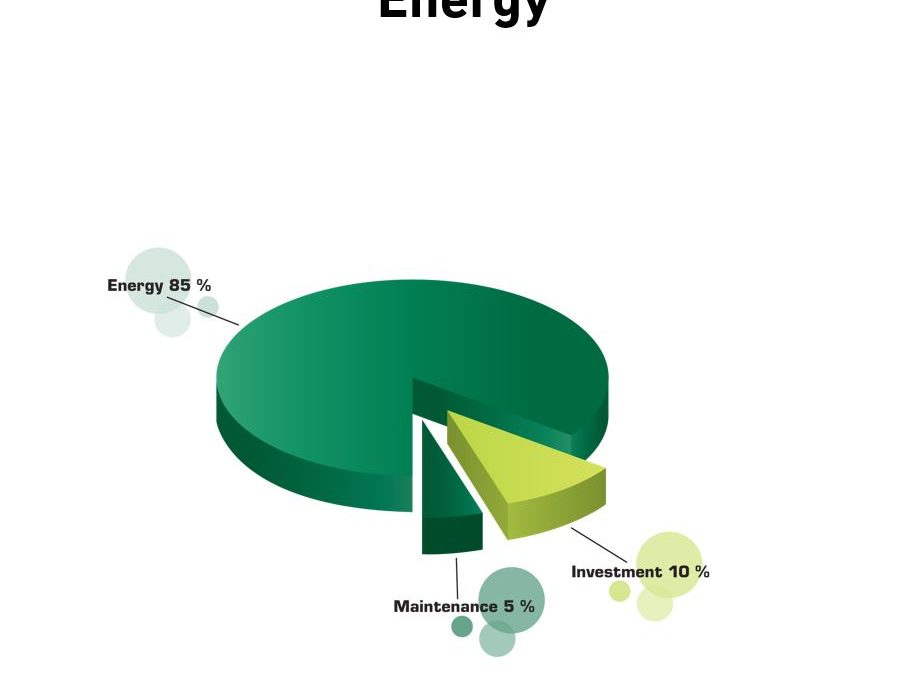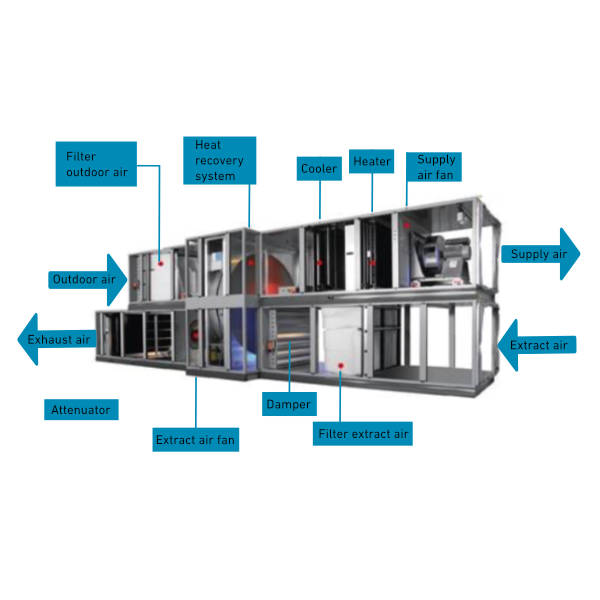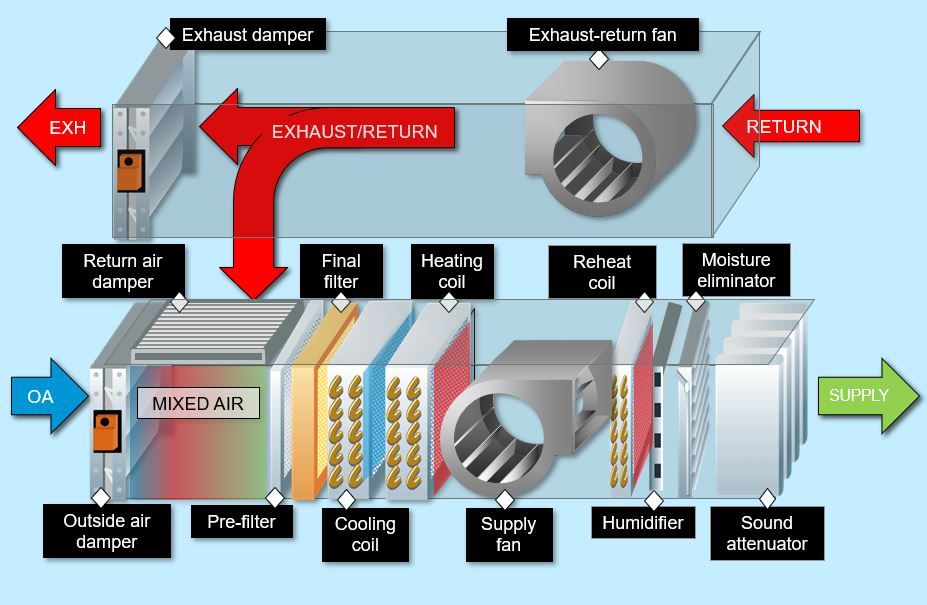Objective definition of comfort ISO 7730 EN 15251

Advantages
- Objective, engineered, concrete definition of quality and thermal comfort
- Protection for the specifier
- Recognises impossible to satisfy everyone due to individual differences
- Greater comfort achievable with greater investment
Can we define quality objectively?
- ISO 7730
- What is Thermal Comfort?
- 6 Factors affecting Thermal Comfort
- Objective Measurements of Comfort – PMV and PPD
- EN 15251
- Designing for Thermal Comfort – simulation software
- Products
- Post-occupancy evaluation
ISO 7730
- Defines thermal comfort
- Describes 6 factors that control it
- Provides standard models to quantify it
EN 15251
- Design and sizing of ventilation system and other building systems
- Comfort and energy efficiency
Contents
- Can we define quality objectively?
- ISO 7730
- What is Thermal Comfort?
- 6 Factors affecting Thermal Comfort
- Objective Measurements of Comfort – PMV and PPD
- EN 15251
- Designing for Thermal Comfort – simulation software
- Products
- Post-occupancy evaluation
What is Thermal Comfort?
‘that condition of mind which expresses satisfaction with the thermal environment’ ISO 7730
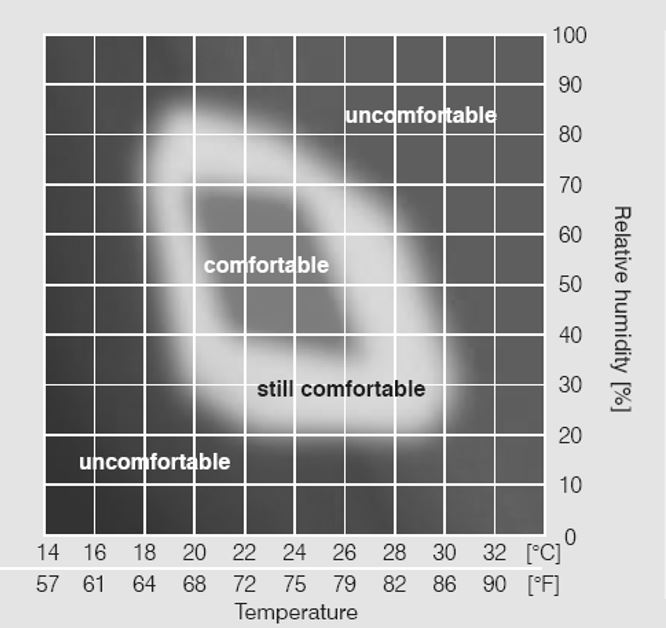
6 Factors affecting Thermal Comfort
Environmental Factors
1.Air temperature (K)
2.Radiant temperature (K)
3.Air velocity (m/s)
4.Humidity (%)
Personal Factors:
5.Clothing insulation (clo or K.m2/W)
6.Metabolic heat (Met or W/m2)
6 Factors affecting Thermal Comfort
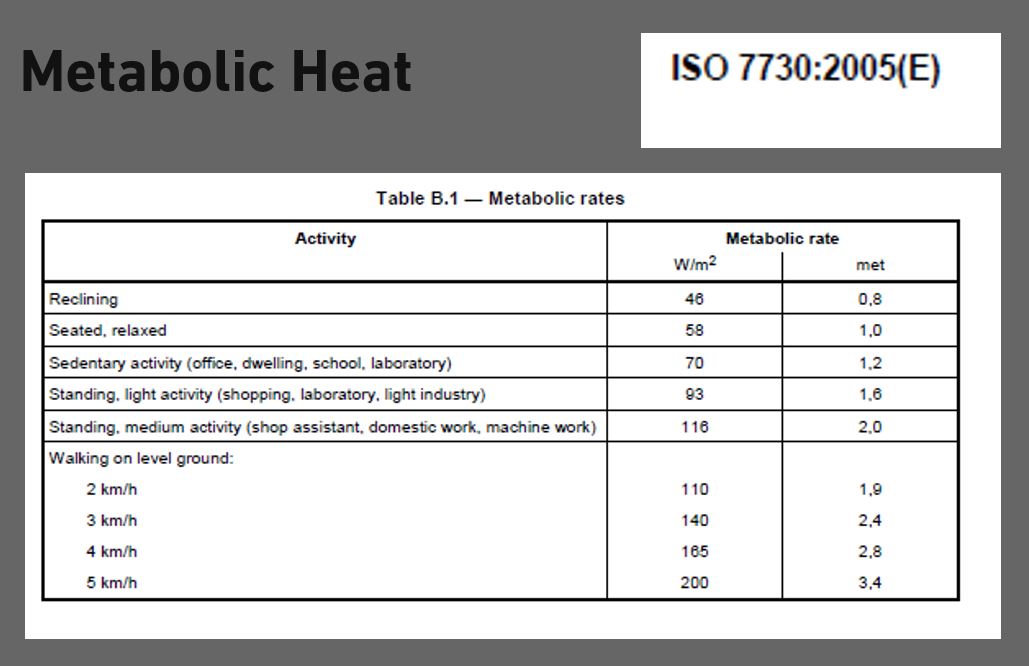
- Air temperature
- Temperature of air around human body
- Dry bulb temperature
- Measured using standard thermometer or temperature probe
- 22°C – 26°C optimum
- Motivation and performance significantly affected
- Radiant temperature
- Measured with black globe thermometer
- Greater influence than Tair
- Skin ~ black object
- Sources: the sun, fires, hot surfaces, ovens, radiant panels
- Air velocity
- Varies over time
- Human sensitivity
- Too low -> stagnant air with odour
- Too high -> draught
- Humidity
- Relative Humidity (RH): 40-70% – no major impact on thermal comfort
- High humidity prevents cooling through perspiration
2 Personal Factors:
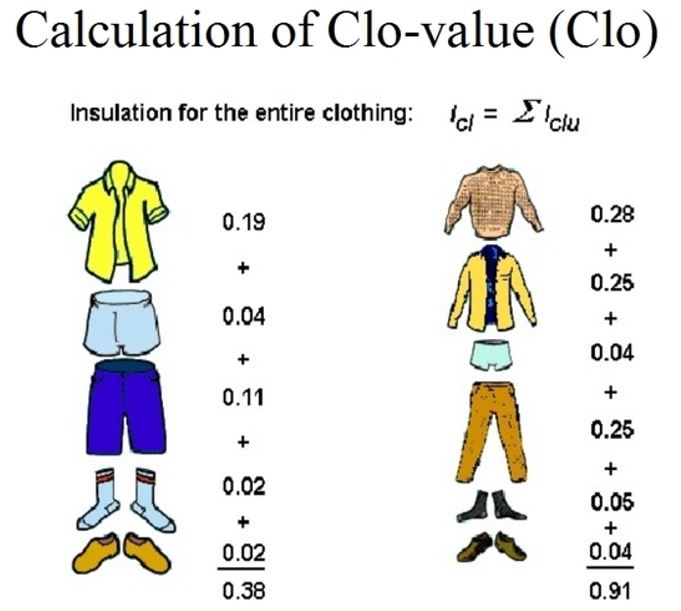
- Clothing insulation and metabolic heat
- Variable
- Sample values in ISO 7730
PMV
- Equations developed based on surveys of occupants in tightly controlled environment
- Enter room characteristics related to 6 factors
- Predicts mean occupant rating of room
- Zero = Thermal neutrality (ideal)
- Decreasing quality at extremes
- First objective means to define quality
Calculate PMV
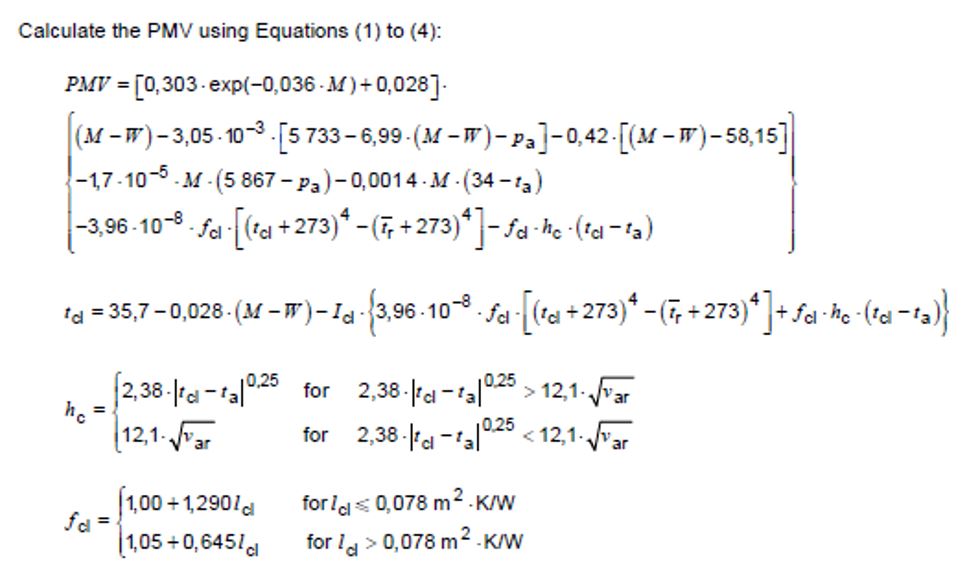
PPD
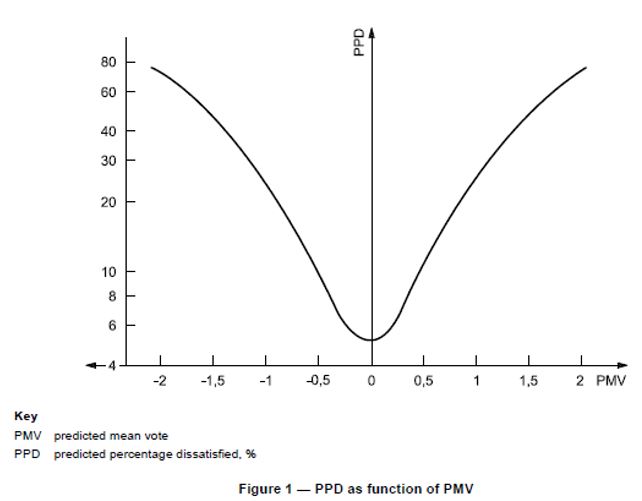
- Percentage people dissatisfied
- Equation to relate PMV to PPD
- Second objective means to define quality
- ASHRAE 55 requires at least 80% of occupants to be satisfied
Calculate PPD
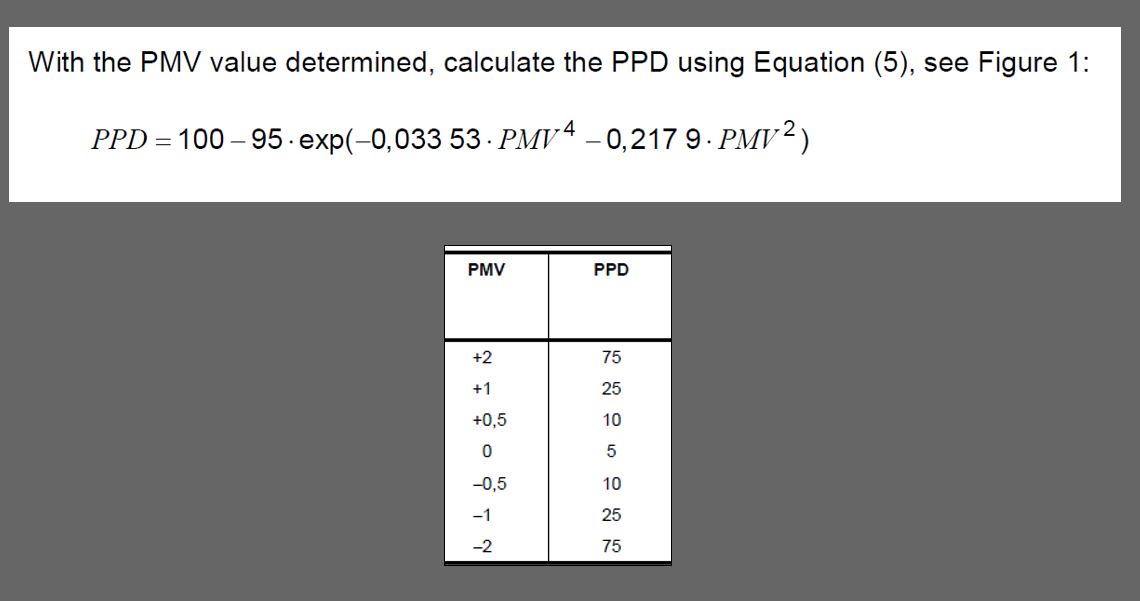
ISO 7730 – Draught Rating
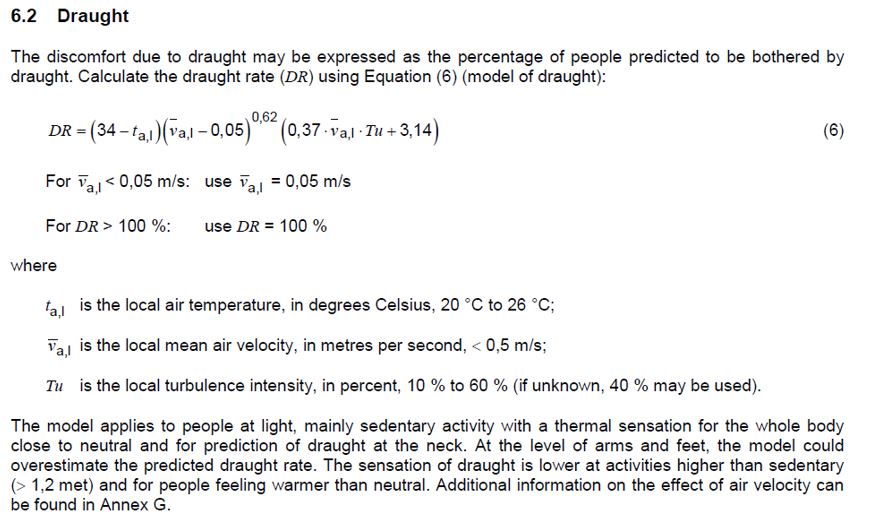
ISO 7730 – Vertical air
temperature difference
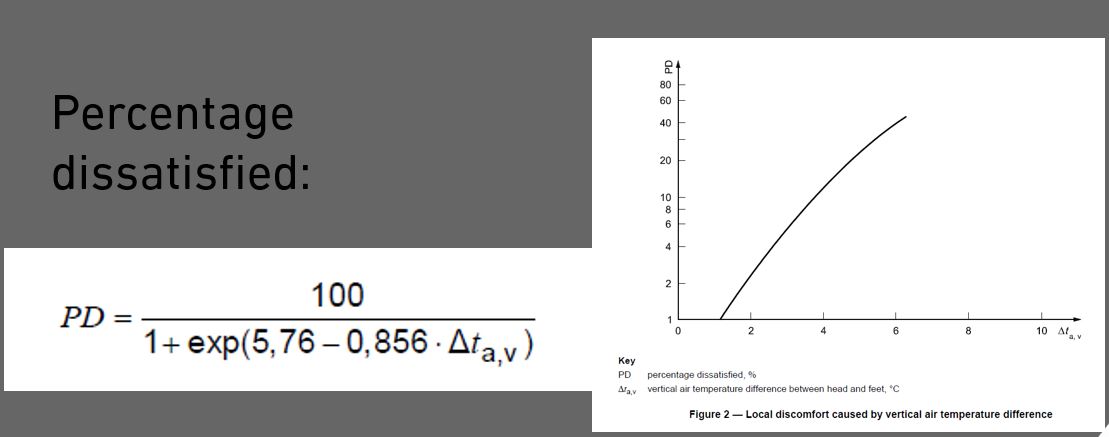
Acceptable thermal environments for comfort:
- 3 categories of environment defined
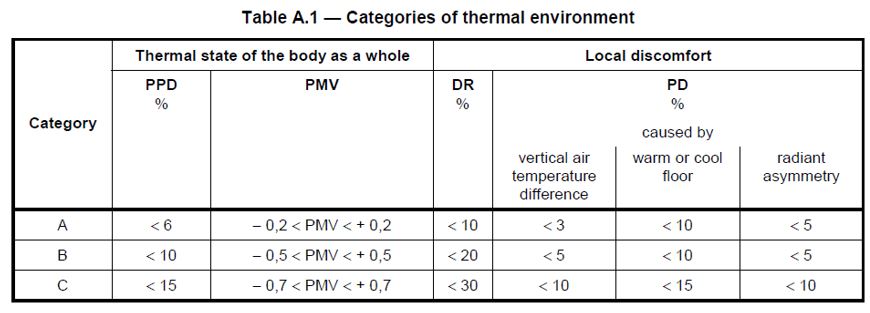
Specifying using EN 7730
1.Value of PMV or
2.PPD or
3.Category (A/B/C)
Specifying using EN 7730
Advantages
- Objective, engineered, concrete definition of quality and thermal comfort
- Protection for the specifier
- Recognises impossible to satisfy everyone due to individual differences
- Greater comfort achievable with greater investment
Contents
- Can we define quality objectively?
- ISO 7730
- What is Thermal Comfort?
- 6 Factors affecting Thermal Comfort
- Objective Measurements of Comfort – PMV and PPD
- EN 15251
- Designing for Thermal Comfort – simulation software
- Products
- Post-occupancy evaluation
EN 15251
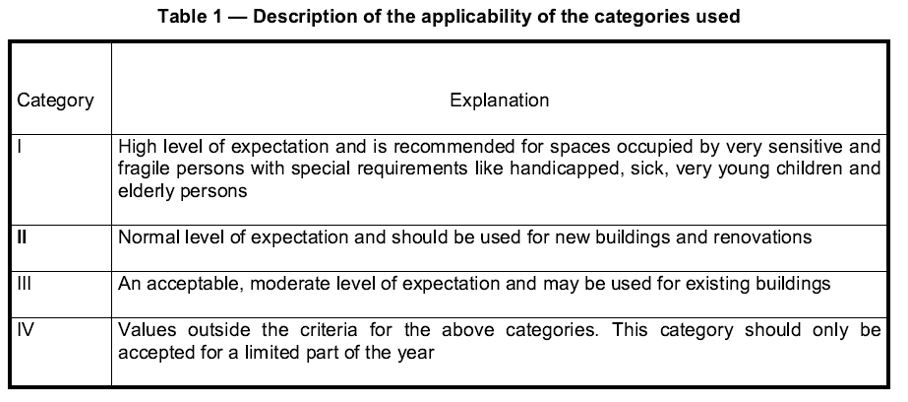
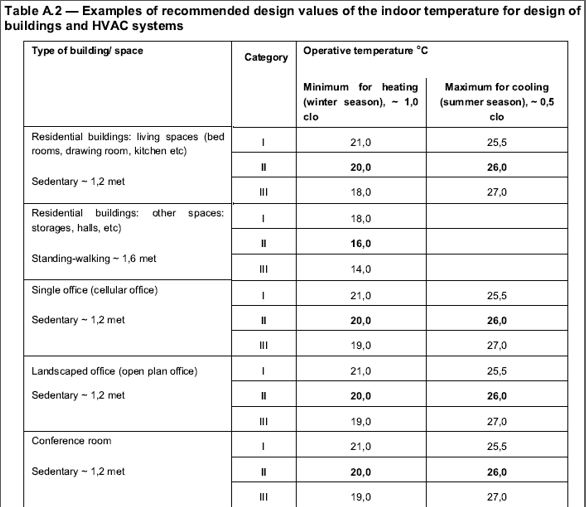
Design Input Criteria for HVAC System Dimensioning
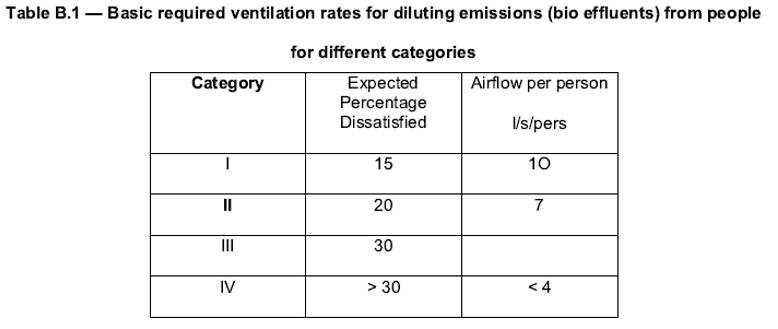

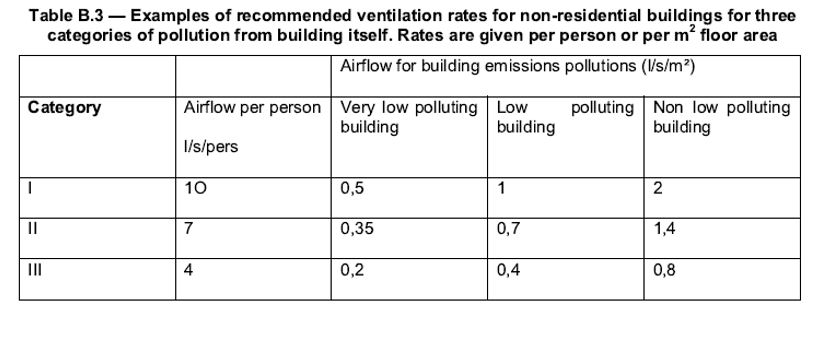
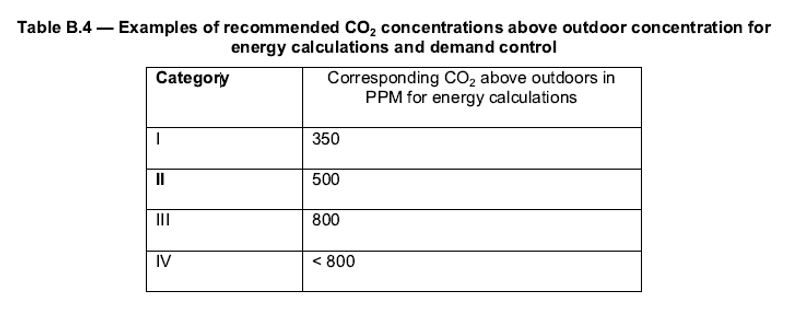
Demand-controlled Ventilation (VAV)
Reduce Fan Energy Use
Meeting Rooms/Conference Rooms/Lecture Theatres
PIR/CO2 Sensors
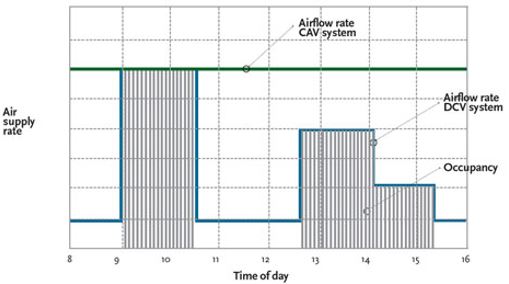
Design Input Criteria for HVAC System Dimensioning
Humidity
- Small effect on thermal sensation and perceived air quality
- High = microbial growth
- Low = dryness and irritation
- Requirements influence dehumidifying (cooling) load
- Special requirements for buildings such as museums, historical buildings, etc
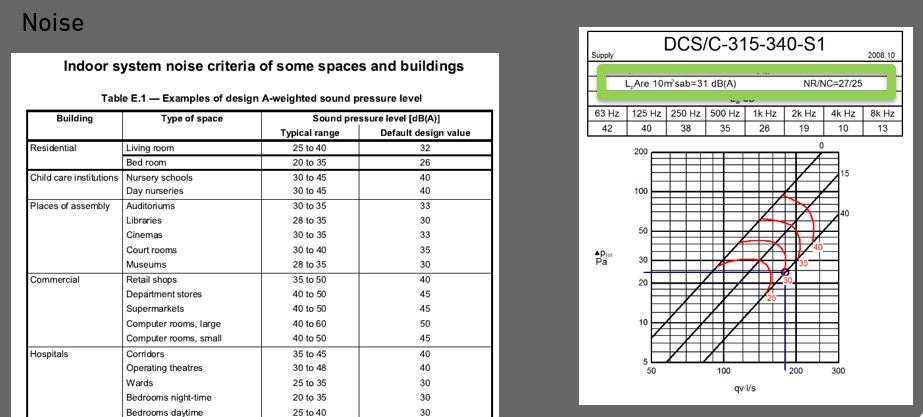
Related posts
November 26, 2019




